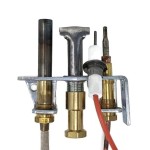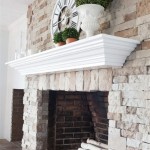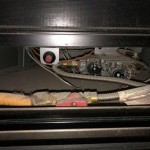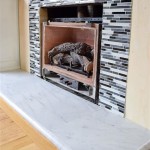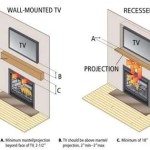Heatilator Novus Direct Vent Gas Fireplace: A Comprehensive Overview
The Heatilator Novus Direct Vent Gas Fireplace represents a modern solution for home heating and ambiance. This fireplace system offers a blend of aesthetic appeal and energy efficiency, designed for ease of installation and operation. Its direct vent technology contributes to a safer and more controlled indoor environment. This article provides a detailed exploration of the Heatilator Novus, focusing on its features, benefits, installation process, maintenance requirements, and overall value proposition.
Direct vent fireplaces, unlike traditional fireplaces, draw combustion air from outside the home and exhaust combustion byproducts directly to the exterior through a sealed venting system. This eliminates the need for a chimney and significantly reduces the risk of carbon monoxide poisoning and backdrafting. The Novus series capitalizes on this technology to provide a clean and efficient heating source. The sealed combustion chamber ensures that no indoor air is used for the fire, preserving the air quality within the home.
Heatilator has established itself as a reputable manufacturer in the fireplace industry, known for its commitment to innovation and quality. The Novus series reflects this commitment, incorporating advancements in burner technology, flame presentation, and remote control functionality. Its design prioritizes ease of use and long-term reliability, making it a popular choice for homeowners seeking a convenient and attractive heating solution.
Key Features and Benefits
The Heatilator Novus Direct Vent Gas Fireplace possesses several features that distinguish it from other fireplace options. These features contribute to its efficiency, aesthetics, and user-friendliness.
Direct Vent Technology: As previously mentioned, the direct vent system is a core element of the Novus fireplace. This closed combustion system ensures that all combustion gases are vented directly outside, eliminating the risks associated with traditional chimneys. This also allows for more flexible installation options, as the fireplace can be vented horizontally through a wall or vertically through the roof.
Variable Flame Height and Heat Output: The Novus fireplace allows users to adjust the flame height and heat output to suit their specific needs. This feature is particularly useful for maintaining a comfortable temperature in the room without overheating. The adjustable flame also allows users to customize the ambiance of the fire, creating a cozy and inviting atmosphere. Some models offer multi-stage burners for more precise control over the flame and heat.
Remote Control Functionality: Many Novus models come equipped with a remote control, which provides convenient control over various fireplace functions. This includes turning the fireplace on and off, adjusting the flame height, and controlling the blower (if applicable). The remote control enhances user comfort and accessibility, allowing users to manage the fireplace from anywhere in the room.
Realistic Flame Appearance: The Novus series is designed to replicate the look and feel of a traditional wood-burning fireplace. The realistic log set and ember bed contribute to a natural and authentic flame appearance. The carefully crafted log designs and burner configurations create a visually appealing fire that enhances the ambiance of any room.
Safety Features: Safety is a top priority in the design of the Novus fireplace. In addition to the direct vent system, the fireplace includes features such as a safety screen to prevent accidental contact with the hot glass. It also incorporates a flame sensor, which automatically shuts off the gas supply if the flame is extinguished, preventing gas leaks. These safety features provide peace of mind for homeowners and ensure the safe operation of the fireplace.
Optional Blower: Some Novus models offer an optional blower, which circulates warm air throughout the room, increasing the fireplace's heating efficiency. The blower helps to distribute heat more evenly, preventing hotspots and ensuring that the entire room is comfortable. The blower speed can often be adjusted to suit individual preferences and heating needs.
Installation Process
The installation of a Heatilator Novus Direct Vent Gas Fireplace typically requires the expertise of a qualified professional. While some homeowners may consider a DIY installation, it is generally recommended to hire a licensed gas fitter or HVAC technician to ensure that the installation is performed correctly and safely. The installation process involves several steps, including venting installation, gas line connection, and electrical wiring.
Venting Installation: The installation of the direct vent system is a critical step in the process. It involves connecting the fireplace to the exterior using specialized venting pipes. The venting system must be installed according to the manufacturer's specifications and local building codes. Proper venting is essential for ensuring that combustion gases are safely exhausted and that the fireplace operates efficiently.
Gas Line Connection: Connecting the fireplace to the gas line requires expertise and caution. A licensed gas fitter must ensure that the gas line is properly sized and connected to the fireplace's gas valve. The gas connection must be leak-tested to ensure that there are no gas leaks. Improper gas line connections can be dangerous and can lead to gas leaks or explosions.
Electrical Wiring: The fireplace requires an electrical connection for the ignition system, remote control, and blower (if applicable). A qualified electrician must ensure that the electrical wiring is properly installed and grounded. The electrical connection must comply with local electrical codes. Improper electrical wiring can be hazardous and can lead to electrical shocks or fires.
Framing and Finishing: Once the venting, gas line, and electrical connections are complete, the fireplace can be framed and finished. The framing provides structural support for the fireplace and allows for the installation of finishing materials such as stone, tile, or wood. The finishing materials should be chosen to complement the decor of the room and to create a visually appealing fireplace surround.
Testing and Inspection: After the installation is complete, the fireplace must be thoroughly tested and inspected to ensure that it is operating correctly and safely. The gas fitter or HVAC technician will test the gas line for leaks, verify the proper operation of the ignition system, and check the venting system for proper draft. A building inspector may also be required to inspect the installation to ensure that it complies with local building codes.
Maintenance and Care
Regular maintenance is essential for ensuring the long-term performance and safety of the Heatilator Novus Direct Vent Gas Fireplace. Proper maintenance includes cleaning the fireplace, inspecting the venting system, and checking the gas line connections.
Cleaning: The fireplace should be cleaned regularly to remove dust, soot, and other debris that can accumulate over time. The glass door should be cleaned with a glass cleaner specifically designed for fireplaces. The log set can be cleaned with a soft brush or vacuum cleaner. Avoid using harsh chemicals or abrasive cleaners, as these can damage the fireplace's finish.
Venting System Inspection: The venting system should be inspected annually to ensure that it is free of obstructions and that the connections are secure. Birds' nests, leaves, and other debris can block the venting system, leading to reduced efficiency and increased risk of carbon monoxide poisoning. A qualified HVAC technician can perform a thorough inspection of the venting system.
Gas Line Inspection: The gas line connections should be checked periodically for leaks. A simple soap-and-water test can be used to detect gas leaks. If a gas leak is suspected, the gas supply should be shut off immediately, and a qualified gas fitter should be contacted.
Pilot Light Maintenance: The pilot light should be inspected regularly to ensure that it is burning brightly and steadily. A weak or flickering pilot light can indicate a problem with the gas supply or the pilot assembly. A qualified gas fitter can clean or replace the pilot assembly if necessary.
Professional Servicing: It is recommended to have the fireplace professionally serviced at least once a year. A qualified HVAC technician can perform a comprehensive inspection of the fireplace, clean the burner assembly, and check the safety controls. Regular professional servicing can help to prevent problems and ensure the safe and efficient operation of the fireplace.
By adhering to these maintenance guidelines, homeowners can extend the lifespan of their Heatilator Novus Direct Vent Gas Fireplace and ensure its continued safe and efficient operation. Regular maintenance not only preserves the fireplace's functionality but also protects the investment made in this heating appliance.

Heatilator Novus Direct Vent Or B Gas Fireplace Nbv Ndv By

Heatilator Novus Gas Fireplace Fireside Hearth Home

Heatilator Novus Gas Fireplace Fireside Hearth Home

Heatilator Novus 42 Traditional Top Rear Direct Vent Propane Gas Fire Us Fireplace

Heatilator Novus Nxt 33 Traditional Top Rear Direct Vent Propane Gas Us Fireplace

Heatilator Novus 33

Heatilator Novus Nxt 36 Direct Vent Gas Fireplace In Our Waesha Showroom Badgerland Wisconsin

Heatilator Novus Nxt Gas Fireplace Best Fire

Indoor Direct Vent Gas Fireplaces Pisgah Insulation

Heatilator Novus 36 Direct Vent Gas Fireplace Ndv4236i Flame Authority
Related Posts


